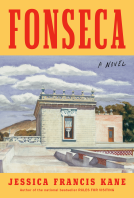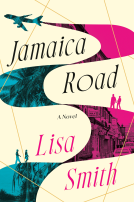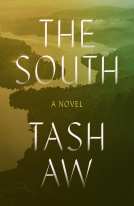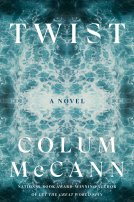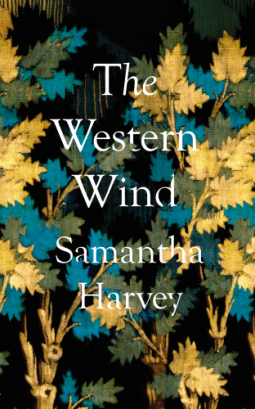
The Western Wind
by Samantha Harvey
This title was previously available on NetGalley and is now archived.
Send NetGalley books directly to your Kindle or Kindle app
1
To read on a Kindle or Kindle app, please add kindle@netgalley.com as an approved email address to receive files in your Amazon account. Click here for step-by-step instructions.
2
Also find your Kindle email address within your Amazon account, and enter it here.
Pub Date Mar 01 2018 | Archive Date Apr 24 2020
Random House UK, Vintage Publishing | Jonathan Cape
Talking about this book? Use #TheWesternWind #NetGalley. More hashtag tips!
Description
15th century Oakham, in Somerset; a tiny village cut off by a big river with no bridge. When a man is swept away by the river in the early hours of Shrove Saturday, an explanation has to be found: accident, suicide or murder? The village priest, John Reve, is privy to many secrets in his role as confessor. But will he be able to unravel what happened to the victim, Thomas Newman, the wealthiest, most capable and industrious man in the village? And what will happen if he can’t?
Moving back in time towards the moment of Thomas Newman’s death, the story is related by Reve – an extraordinary creation, a patient shepherd to his wayward flock, and a man with secrets of his own to keep. Through his eyes, and his indelible voice, Harvey creates a medieval world entirely tangible in its immediacy.
Advance Praise
The Western Wind is an extraordinary, wise, wild and beautiful book – a thrilling mystery story and a lyrical enquiry into ideas of certainty and belief. Surprising, richly imagined, gloriously strange – the best kind of fiction.
Joanna Kavenna
The extraordinary thing about this novel is the way Harvey re-creates the mindset and beliefs of the medieval world, and makes the concerns of 500 years ago vivid and immediate
Alice O'Keefe, March Fiction Book of the Month, The Bookseller
Available Editions
| EDITION | Other Format |
| ISBN | 9781787330597 |
| PRICE | £16.99 (GBP) |
| PAGES | 304 |
Featured Reviews
 Tara O, Reviewer
Tara O, Reviewer
A historical novel set in a tiny village in 16th century Somerset, narrated by the Parish priest. Not necessarily your average set up for a twisty, turny thriller, but a fascinating one nonetheless. The Western Wind is told day by day in reverse chronological order, opening several days after a sudden death has plunged the tiny community of Oakham into confusion, and working backwards one day at a time to reveal the secrets behind every closed door. In the dark of his confession booth, priest John Reve is privy to the secrets of all his parishioners, but as the novel progresses it becomes clear that somebody isn’t telling the truth. It’s beautifully written and the pace is deliciously slow, steadily building and powerful.
 Tracey M, Bookseller
Tracey M, Bookseller
What an original book..
In the reign of Henry V11 the body of a wealthy landowner Thomas Newman is washed up on the banks of a river of an isolated Somerset community. Then the body mysteriously vanishes. Is it suicide or murder?
The narrator is village priest John Reve takes us back in time as we find out how this happened. Some people have expected this to be a Medieval/ Tudor whodunnit but this book has a genre- defying quality.
Not only is it about the mystery of the body, but also about isolation- the village bridge has been washed away in a flood. John Reve is in some ways isolated from the church he serves and set apart from the villagers.
"winter was the most tormented of times-too much thinking in too much time in too much darkness"
However he is also part of this community too. Themes of guilt and belief also are part of the strong currents of this book.. It reminded me of The Deposition of Father McGreevy by Brian O' Doherty
There is a strong sense of the cycles of nature and of human life and death.
The ripple effect of the body being found affects all members of the community. (I read John McGregor's contemporary Reservoir 13 at around the same time and that has similar themes)
The prose style is lyrical and accomplished without being "flashy". The whole book has an artistic integrity .
I liked the complete originality of the book, that is is genre defying and the subtle psychological study of John Reve. I feel that this is a book that needs several readings to understand all the strong undercurrents that carry the reader along.
Powerful and unforgettable.
 Reviewer 407950
Reviewer 407950
A cleverly told tale unwound backwards following a compelling and unforgettable protagonist. Balances the urgency of a masterful plot with beautiful writing.
 Nadine H, Reviewer
Nadine H, Reviewer
Such an interesting book. The story follows the events that unfold in Oakham, a 15th century hamlet in Somerset, after the disappearance of it's wealthiest (and therefore most important) citizen. The story follows the local priest, John Reve, and through him we slowly discover the characters and secrets of the other inhabitants of this tiny community. Although there are questions surrounding the disappearance throuhout the novel - was it an accident? Was it murder? - this is not a thriller by any stretch, more of a quiet character study. The writing style was instantly engaging and kept you wanting to come back for more, and I loved the narrative technique used. Instead of traditionally beginning with a disappearance and going from there, Harvey has us travel backwards, slowly peeling away the layers of the character's behaviours to reveal what lays beneath. I know it's not a style that suits everyone, but I found this so clever, and it really turned all assumptons I'd made about the characters completely around. Fantastic! Will definitely enjoy rereading this at some point again in the future.
Having read Samantha Harvey's Dear Thief, I knew she was an incredible prose writer, but in The Western Wind she demonstrates a breadth that goes beyond the relatively narrow confines of her previous book (much as I loved it). The Western Wind, set in the small Somerset village of Oakham in 1491, is narrated by the local priest, John Reve. The novel opens with the confirmation of the death of one of the most prominent villagers, Thomas Newman: a man respected by his fellows as a wealthy benefactor, but who recently returned from a trip to Rome with new and strange ideas about religion. When the dean swoops in to investigate Newman's death, Reve realises that to protect his flock he will have to find some answers of his own. Was Newman murdered? Did he fall in by accident, mirroring the fate of the last bridge that was supposed to connect Oakham to the outside world? Or - despite the stakes for his immortal soul - could he have committed suicide?
The Western Wind is especially impressive in its handling of time. The novel, like Sarah Waters's The Night Watch, moves backwards; we start on the fourth day, when Newman's abandoned shirt is discovered, and finish on the first day, when Newman is still alive. Harvey handles this incredibly well; the closer time frame means she has to be even cleverer than Waters to avoid unnecessary repetition and confusion, and she pulls it off with consistent grace, making brilliant use of seemingly throwaway details. The cold goose fat in Reve's fireplace on the fourth day becomes a goose unhappily devoured on the third; milk trickling between cobbles on the third day becomes a milk-cart upset on the second. However, I think it would be a mistake to think of the book's structure as linear in either direction. As the repeating chapter titles indicate, Harvey is exploring the different ways in which these late medieval villagers might have thought of time; it's also circular, with each season leading to the next and the birth of Jesus leading to his death and then his birth. It's only when the book comes full circle and we witness Reve's last conversation with Newman that we understand what has happened. The two ends join together.
Harvey also makes adept use of the conceit of the confessional, newly introduced to Oakham at the time of Newman's death after he brought back news of this novel practice from Rome (I've seen some quibbling about the accuracy of this from some readers, but it seems to me that Harvey isn't thinking about a fixed, immovable confession-box but some form of structure in which to give confessions, rather than them being heard in public as was the previous practice.) In this limited privacy, Reve learns more about his fellow villagers than was the case before. And we too get a glimpse into a medieval village that seems entirely complete, with its own rituals and connections. Whatever the precise dating of confessionals, Harvey certainly does as well with the medieval mindset as could be expected in a modern novel, especially when exploring Reve's faith and his fretting over Newman's ultimate fate. For example, Reve frets over whether Newman saw St Christopher on the wall of the church before he died, as this was believed to provide some protection for the soul for those who died unshriven. The Western Wind requires some thought and time from the reader, but it definitely repays that effort.
 NikkiZoe n, Reviewer
NikkiZoe n, Reviewer
Thanks Random House UK, Vintage Publishing and netgalley for this ARC.
Very slow to start but you won't get a more intense and real to life immersive experience in medieval day to day living than this novel. All the sordid, crazy, and immoral confessions with a sleuthing priest throw into the mix.
The story centres on a remote English village at the end of the 15th Century seemingly unaffected by the political upheavals of the past. The spiritual and temporal well being of the village is in the hands of the Village priest. The events that took place over the week end up to stove Tuesday is seen in depth through the eyes of the priest. Events take place that threatens the future wellbeing of the village and the priest through the confessions and the sharing of confidences and secrets results provides him with a number of options to plot the way ahead. The village is under threat of having its arable land acquired by a rich monastery neighbour and there is a need to build a bridge across the river from the bank where the village is located to enhance its future. A most interesting and intriguing story that ends with the priest left with having to decide what to do by strove Tuesday. Having shared the same knowledge as acquired by the priest what he decide is left with the reader to ponder.
 Mary H, Reviewer
Mary H, Reviewer
A historical novel with a difference. Set in 15th Century England and narrated by Reve, a priest the story proceeds at a slow burn reflecting the time in which it is set.
We follow Reve's progress and are privy to his thoughts as he meanders through daily life trying to solve the mystery of Newman's death while ministering to his flock.
The reader shares his observations and hears confessions alongside him. Through him the medieval psyche is revealed with its mix of faith and superstition. We are shown human nature in all its manifestations. The frailties, the pettiness, the meanness of spirit but also the good and the thoughtful in the souls of men are exposed in this novel. Harvey is careful to depict the both pace and the hardships of life giving the novel a sense of authenticity.
For the lover of historical fiction this is a little gem. Harvey successfully weaves a good murder mystery with an insight into the ways of thinking and life of the time.
 Margaret F, Reviewer
Margaret F, Reviewer
The Western Wind really is an extraordinary book. I was drawn into the story right from the start. Samantha Harvey’s writing brings to life the sights, smells and sounds of the daily life of the ordinary people living in Oakham, a small village in Somerset in 1491. So often in historical fiction it’s about the notable historical figures of the period that are the main characters – here there none (although there is a reference to their bishop who is in prison for trying to put a pretender on the throne (Perkin Warbeck had first claimed the English throne in 1490).
A man disappears, presumed drowned – but how and why did he die? Oakham, an impoverished village is isolated, cut off from the surrounding villages and from the monks at the abbey in Bruton by the river with its bends and oxbows, and the long woody ridge to the north-east edge of the village. There are no outsiders.
I thought the way Samantha Harvey reveals how Thomas Newman died telling the story moving back day by day to the day of his death was very effective, although at first I was a bit puzzled. By the end – that is – on the day Thomas Newman disappeared – we know so much about him and his neighbours, mainly through the confessions they made to the narrator, John Reve, the village priest. And the sequence of events, the why and the how are revealed.
The people are superstitious, living in fear of the whims and punishments of God and taking everything as a warning. Reve tries to reassure them that the creatures they fear, such as wolf-men and grotesque sea creatures don’t exist, but that there are ill spirits to test us and strengthen us; that what we call good or bad luck are spirits, that live in the air or in the water and that we can conquer them. Reve prays for a sign that Newman was on his way through purgatory safely to heaven. The wind is blowing from the east, a strong and bitter wind, so he prays for a wind from the west to blow the ill spirits away.
This is in some ways an allegorical tale, with the characters standing for symbolical figures, and events as symbols of change. Hence there is Newman, a relative newcomer to the village the bringer of change as he gradually bought land off Townshend, the lord of the manor, now impoverished. Does this make him a suspect for Newman’s death?
The monks, who it is said are keen to buy the village land, also foreshadow the changes that are to come in the next half century or so. Reve, the priest (my Local Historian’s Encyclopedia tells me a reeve was usually a man of villein status who organised the daily business of the manor) is concerned that people are no longer coming to him for confession but paying a travelling friar, who didn’t know them, for a confession incognito. The people are losing their faith in God.
I loved other details, setting the book in the 1490s – the techniques of bridge building, the traditional games such as ‘campball’ (the precursor of football) played by all the young men of the parish with a pig’s bladder up and down the village road, the cock-fighting, the food and drink – spiced beer and metheglin (a variety of mead), giving out the sweetness of honey, and the music – the tinkling of tambourines, pipes and drumming on goat-hide.
I came to the end of this book and immediately wanted to start it again. What seems at first to be a simple tale is actually a multi-layered and complex book. I really enjoyed reading it.
 Philipa C, Reviewer
Philipa C, Reviewer
Another murder mystery with a hint of Cadfael I thought as I began this tale set in 15th century Oakham in Somerset. When a body is washed up and reported to the parish priest John Reve by local man Herry Carter who seems to feel it was his fault the intricacies of lives in a church dominated world set us in a whole new perspective viewing the characters wonderfully portrayed by the author.
We begin on Shrove Tuesday in 1491 but as the plot progresses we travel back a few days to understand more of Thomas Newman who not only died, but then whose body mysteriously disappears leaving only a green shirt as evidence. That he seemingly drowned in the river over which he was determined to build a bridge is a great image especially when the Dean arrives who 'has a nose for the nasty' to question the villagers and interrogate John.
Around Oakham the monks of a nearby estate are circling and as Newman owned most of the land his death and inheritance prove a vital link to why this death strikes at the heart of a suspicious community.
The writing evokes the sense of Church as dominant and villagers who travel no further than their own fields seeking penance in John's tiny confessional as more victims than the dead man himself.
The actions are pared down to show the limits of medieval life. The meagre food, the pestilence and threat of death by sin and the imagery that signifies guilt for ever being mixed with religious beliefs. Those who rule in the church of course, as is pertinent even in the 21st century are not themselves without sin, so John and the church he represents are themselves under scrutiny and not just from God.
I like the style of this writer and thoroughly enjoyed the novel. I believe she has written others which I will seek out.
 Lauren L, Bookseller
Lauren L, Bookseller
A fabulous mystery and historical novel, most readers will want to read twice. Harvey's lyrical writing about the natural world is married to a strong reverse chronology and the pace of a murder mystery, to excellent effect. Set during the days before Lent in an unspecified year of the 15th century, a disappearance in a small village is explored by the priest and his regional superior. Layers upon layers unfold as the days peel back. The Western Wind is beautifully written and attention holding, a thriller about mortality, love and religion. My first thoughts of of Harvest by Crace and The Name of the Rose by Eco were pushed back, this novel is by original, vital and strong.
Readers who liked this book also liked:
Publishers Lunch
General Fiction (Adult), Nonfiction (Adult), Teens & YA



